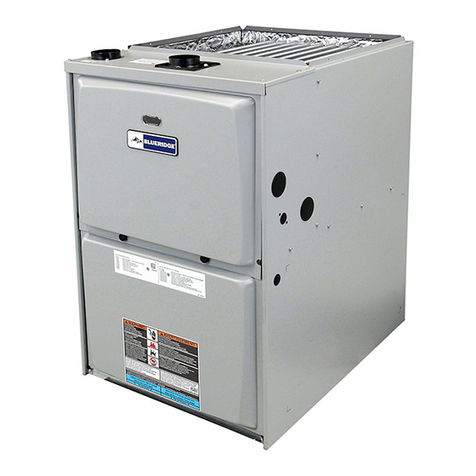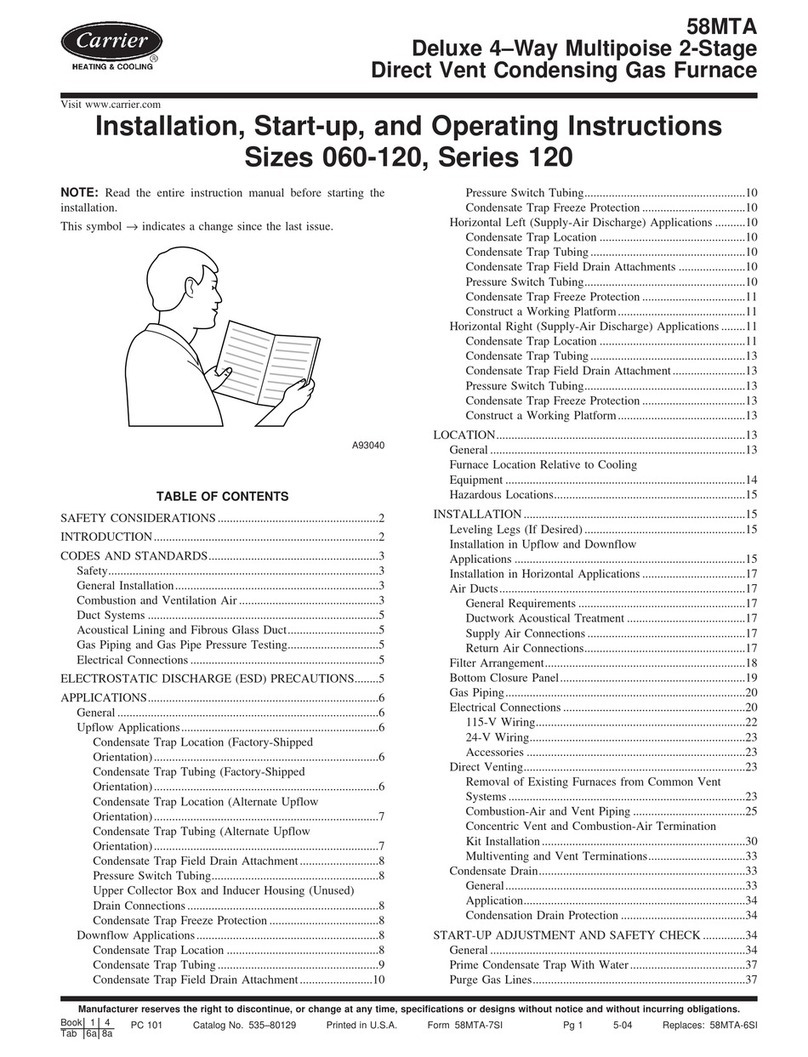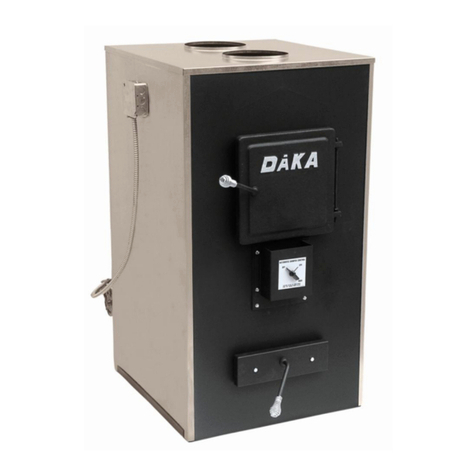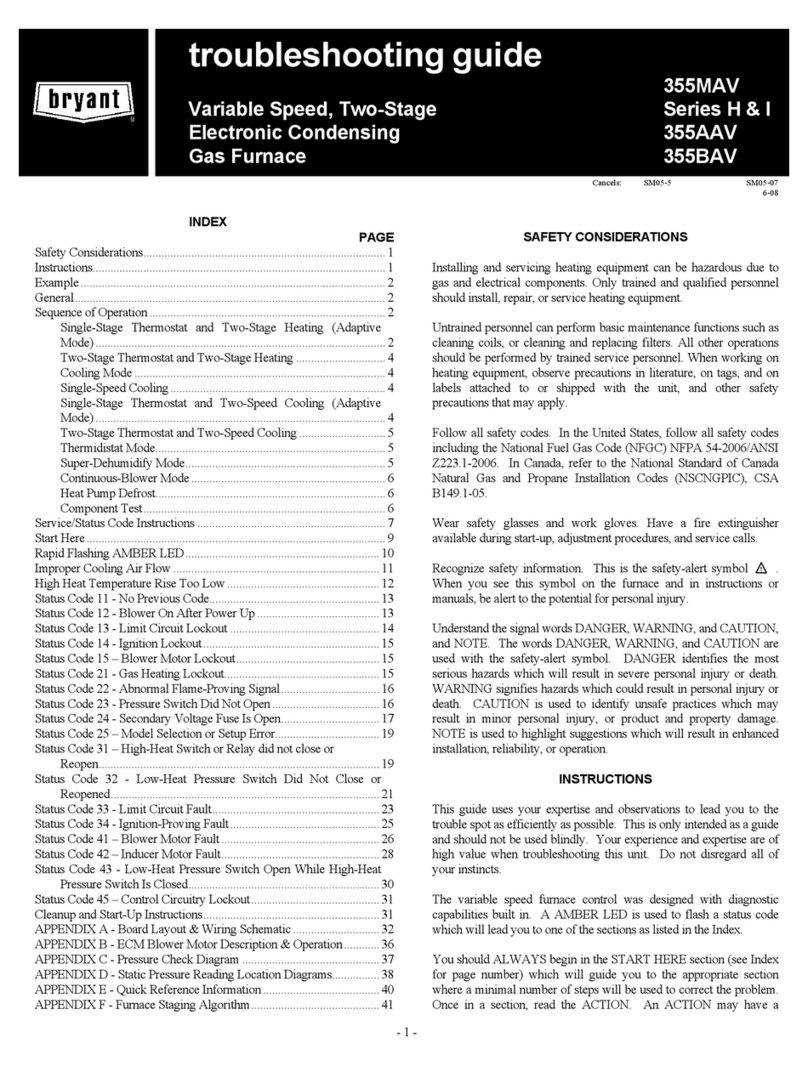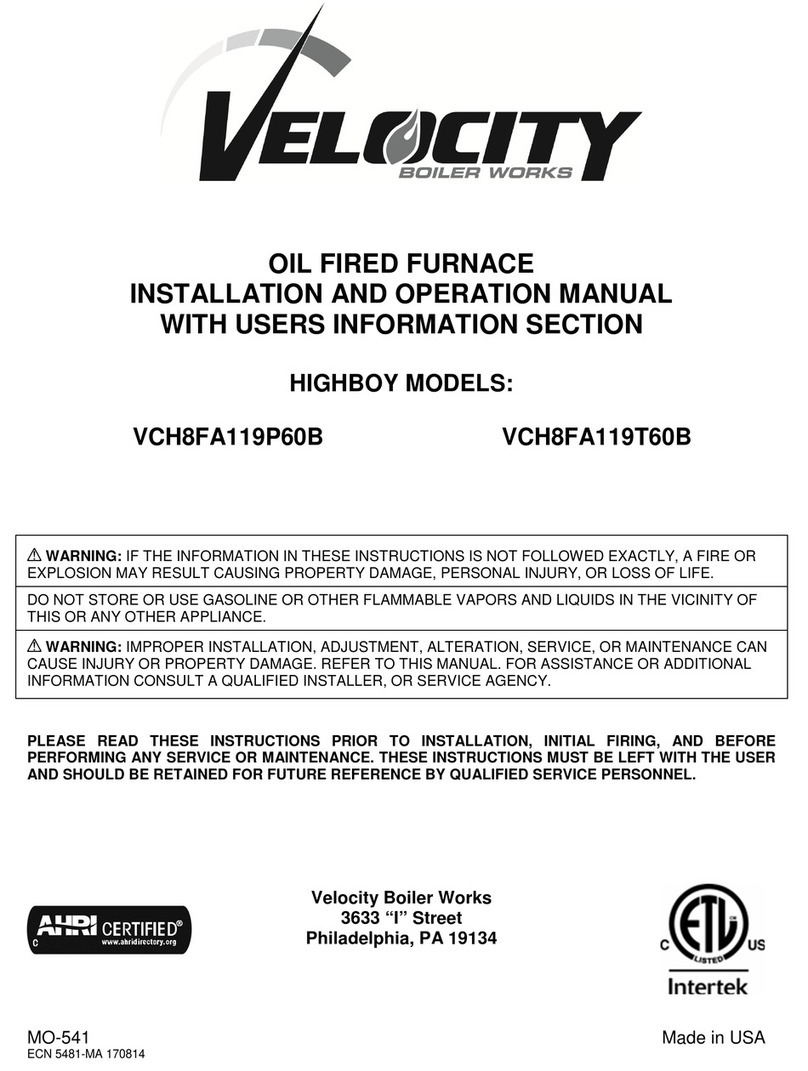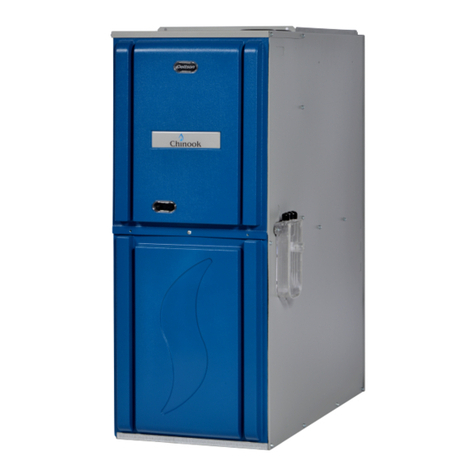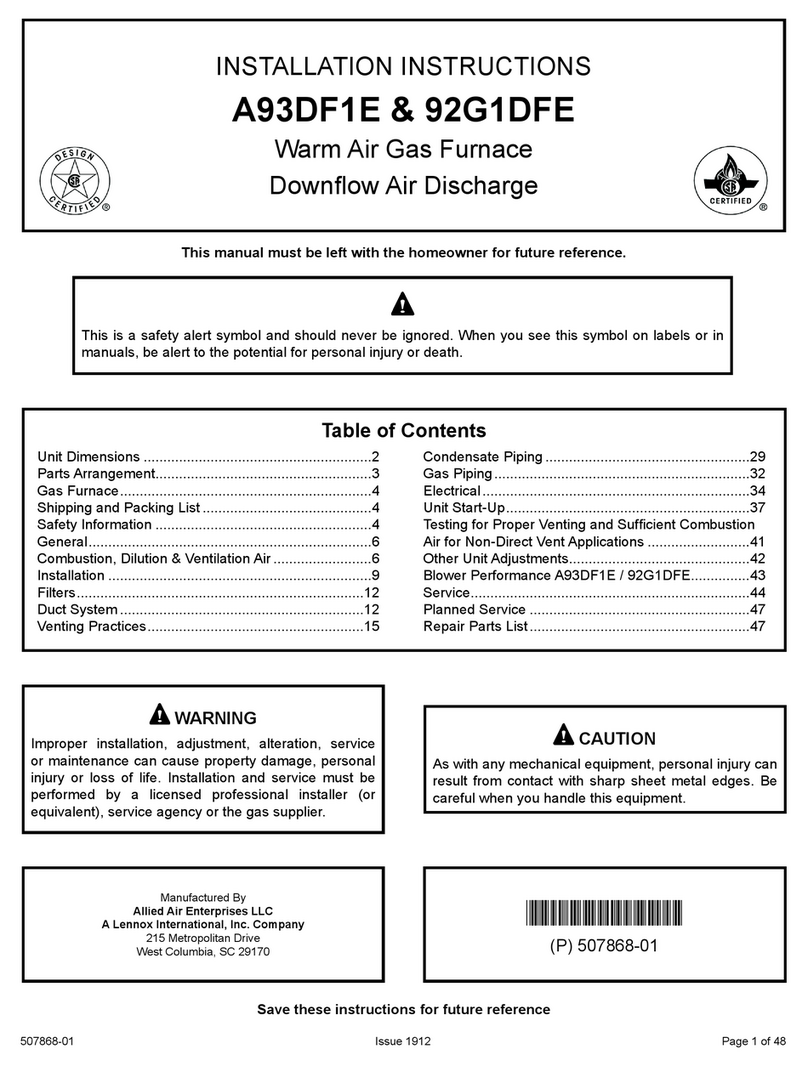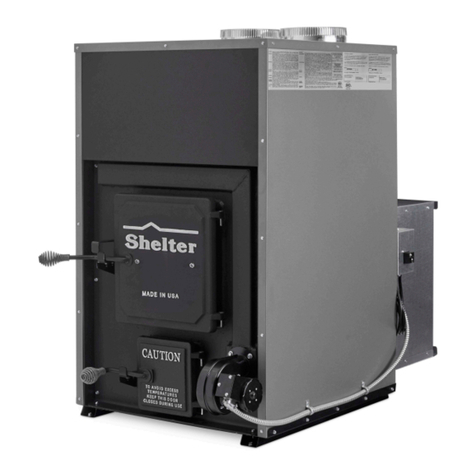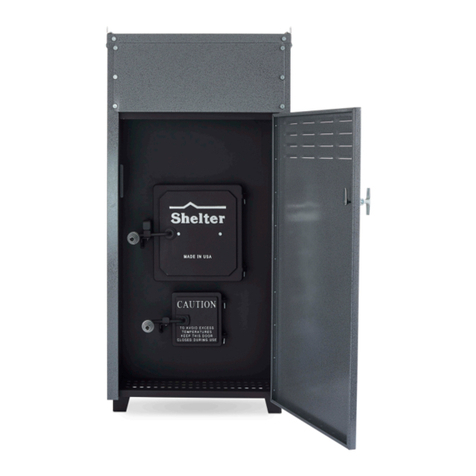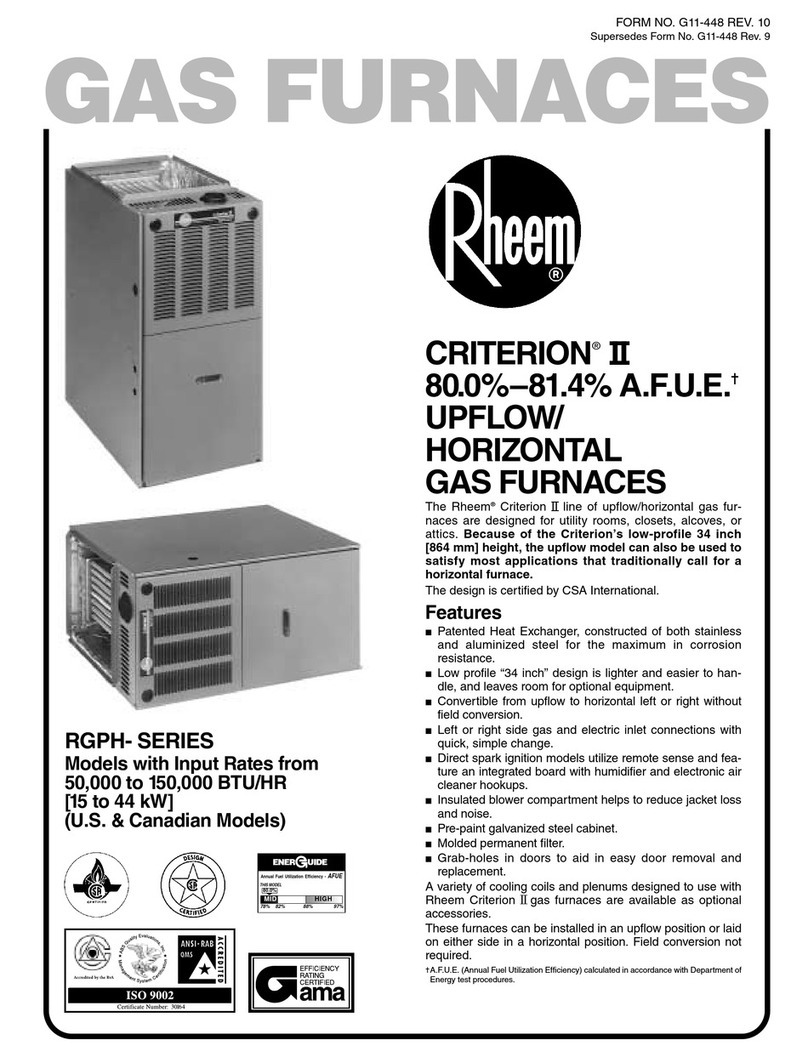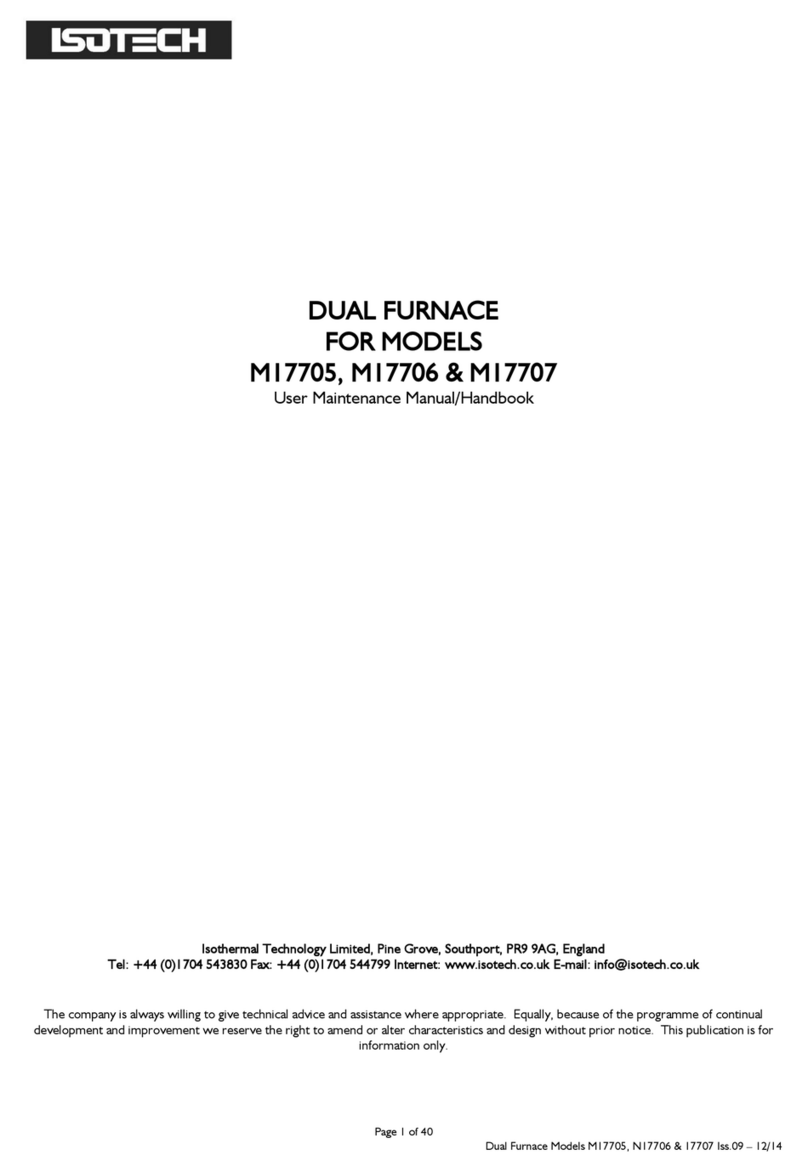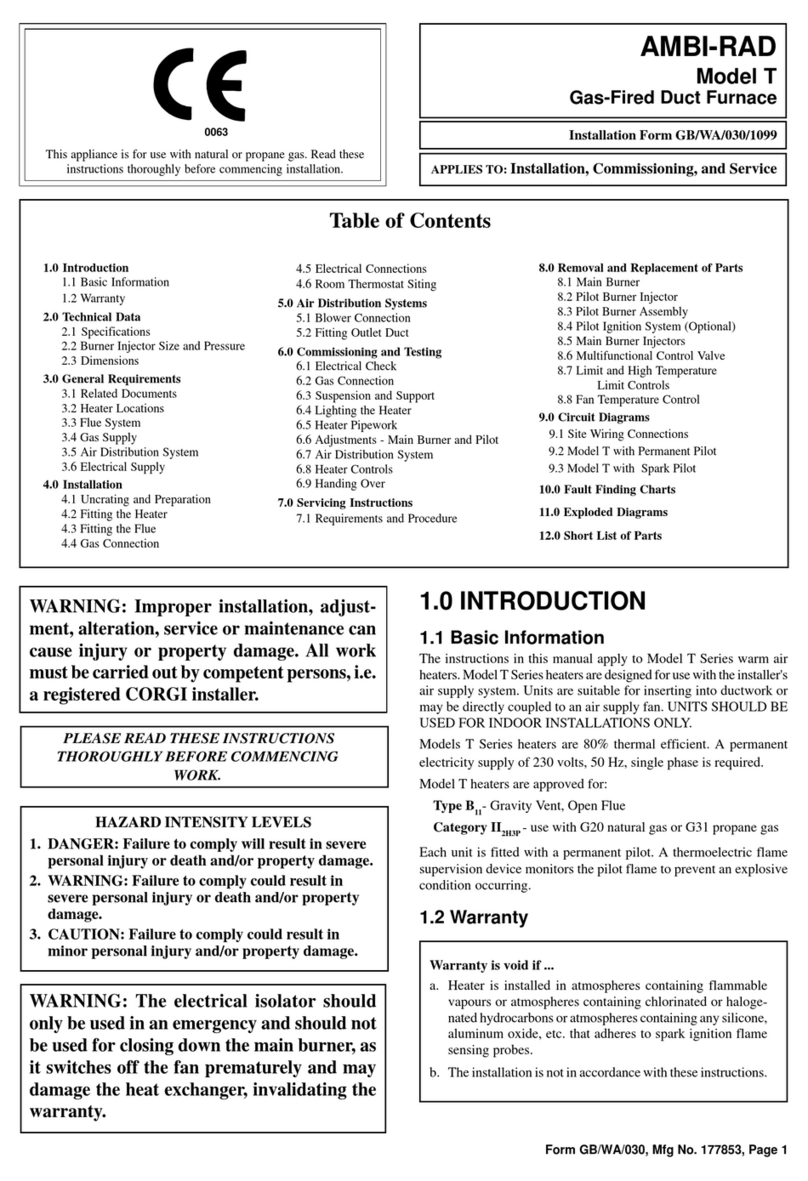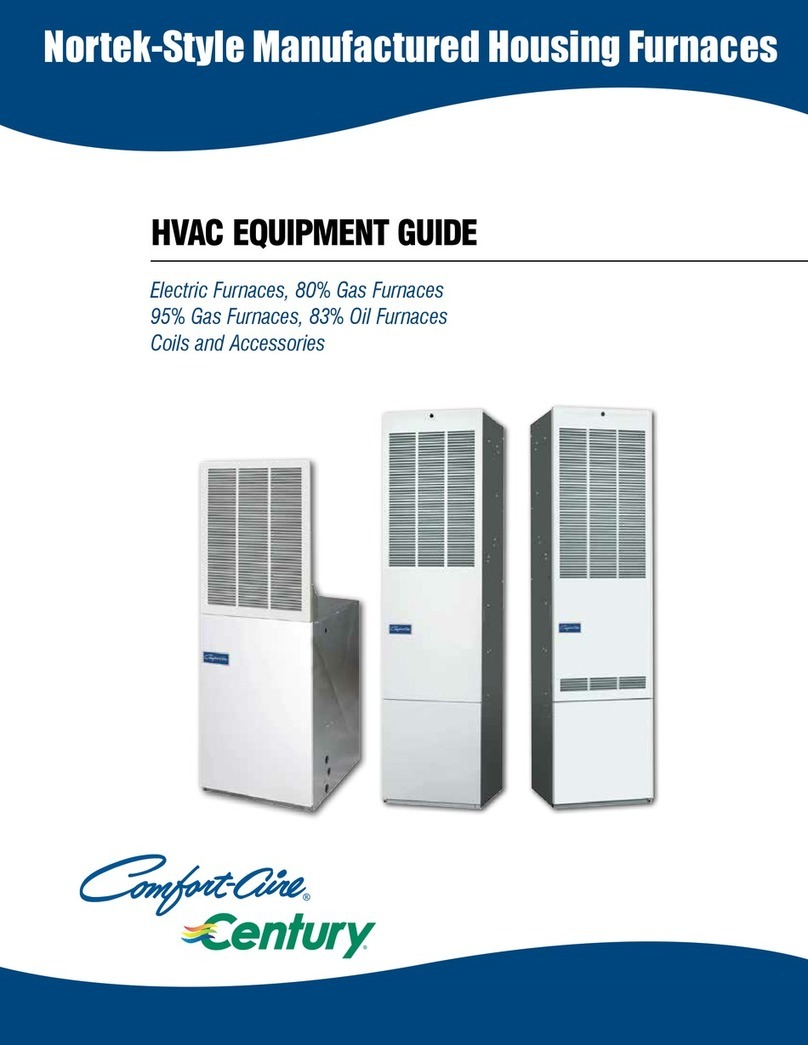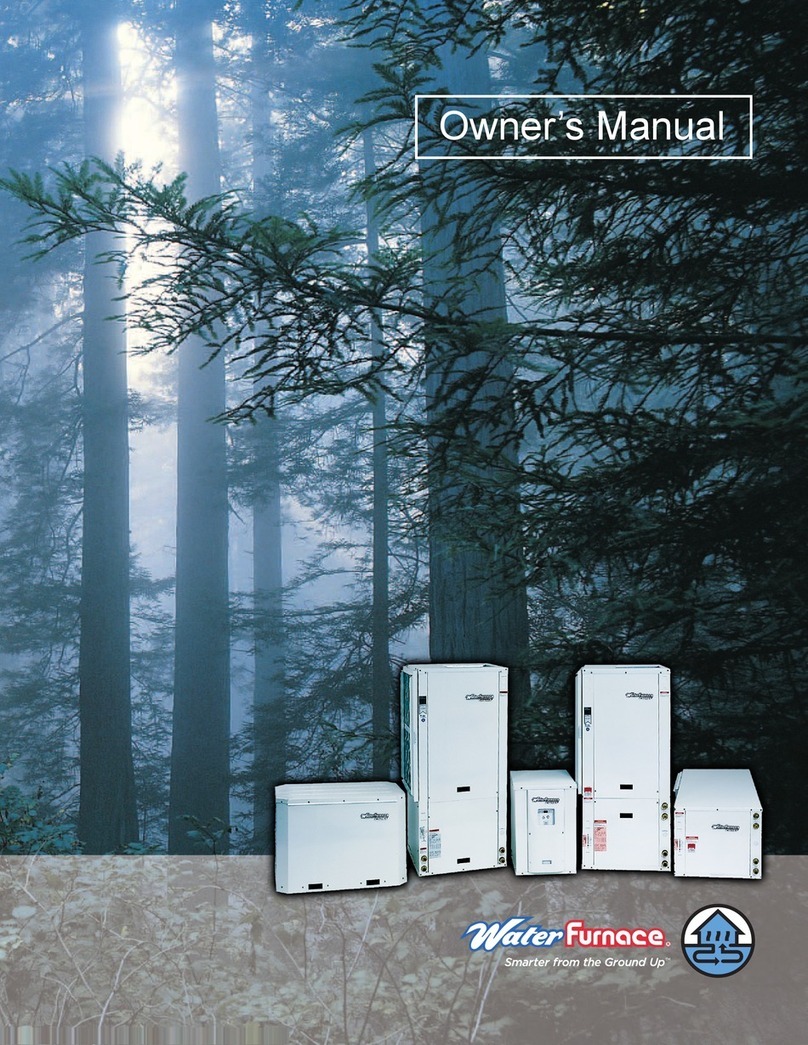
14
IMPORTANT: FOR TECHNICAL SUPPORT OR CUSTOMER SERVICE
ISSUES, DO NOT RETURN TO THE STORE (THE STORE DOES NOT HAVE
REPLACEMENT PARTS), CALL SHELTER FURNACE AT 1-800-875-4788.
First Coal Fire:
Burning coal is much harder than burning wood. There is more care and work in building and maintaining a coal re than a wood re.
Anthracite is the best coal to burn, due to its long even burn with higher heat output and clean burn quality but is more difcult than
Bituminous coal.
The size of coal is important. “Nut” coal sizes of 4 inches for Bituminous and 2¾ to 4½ inches for Anthracite coal are recommended.
Never use coal other than the sizes recommended. If the coal is too small it will smother the re and if it is too large the coal will not burn
well.
When burning Bituminous coal, start the re with wood (as described above). Always use dry kindling, as this will provide a hotter re
and add small pieces of wood until you get a good hot ember bed. At this point add a small amount of coal. When the coal is hot enough
to ignite, add small amounts at a time, so as not to smother the re. Keep in mind that Bituminous coal will require more maintenance as
this type of coal will produce more soot, requiring more frequent cleaning to prevent buildup.
Also make sure that the spin draft control is wide open to establish the correct burn pattern. When adding coal to Bituminous res always
add coal to the center of the bed creating the cone effect. Bituminous coal is more volatile and adding coal to the center of the bed
causes the ames to drive off the volatile gases. Remember that no two installations and chimney set-ups are the same, so be prepared
to experiment until you achieve the desired results. Always allow enough air to the rebox so that volatile gases are properly burned.
When adding fuel, remember to break up the cone with a poker if it has formed a crust, but be careful to avoid mixing the coal as this
can form clinkers. Shake the grates a couple times so as not to disturb the re. Excessive shaking wastes fuel and exposes the grate to
extreme heat, which will cause warping or burnout. For overnight burn operations, follow the above instructions and adjust the chimney
damper and set the thermostat.
When burning Anthracite coal, start the re with wood (as described above). Add layers of coal making sure not to smother the re,
the third layer should be a little heavier, but should not to extend above 2 inches below the top of the brick in the rebox. Before
adding more fuel, be sure to leave a red spot in the center of the bed. This hot spot will help ignite the gases given off the new charge.
A deep charge will give a more even heat and a longer re. It may take up to a couple hours before the whole bed is fully ignited. When
the re is established and the home is becoming warm, you may adjust the damper. It may still take some experimenting with the wall
thermostat to ensure proper operation, as no two installations are the same. Once the coal bed has reduced to half its original depth it
is time to add fuel to the furnace. At this point pull out the bypass rod and turn up the wall thermostat. This will allow the re to burn off
the accumulated gases. Open the fuel door, using a small rake or hoe pull the coals towards the front of the bed, trying not to disturb the
re too much. Next, add coal to the back, being careful not to seal off the top. Keep the ash drawer cleaned out to ensure good airow.
You may want to start this banking process early in the evening before retiring or before leaving the home so that you may make proper
adjustments after the re is well established.
WARNING: It is unsafe to load any type of coal within 2 inches of the top of the rebrick. Load fuel carefully or damage may result.
NOTE: Do not burn coke, charcoal, highly volatile Bituminous coal, sub Bituminous, lignite or cannel coal (sometimes called channel
coal or candle coal). Never burn wax or chemically processed logs, such as re logs as their use is for replaces only. Please follow all
guidelines in this manual concerning wood and coal burning applications due to safety concerns and to maintain warranty coverage.
BURN WOOD AND COAL ONLY!
Fuel Recommendations:
For the SF3048 model, heat resistant gloves are recommended when loading the furnace. Only use dry, seasoned hardwoods in your
Shelter Furnace rather than high resin woods such as pine. Firewood should be cut at least one full season prior to the time of its
intended use for optimum heat output. Firewood should be stacked to provide a free ow of air between the logs; this allows the wood
to season faster. If wood is stored outdoors, it should be completely covered year round to protect it from moisture and exposure to the
elements. Use extreme caution when opening the ash drawer and fuel door during operation, temperatures can exceed 300° F. Wait at
least 10 seconds after releasing the rst latch, then proceed to the fully open position. The dual latch system has been incorporated as a
safety feature, which was designed to reduce the possibility of gaseous ignition. Heat resistant gloves are recommended when opening




















